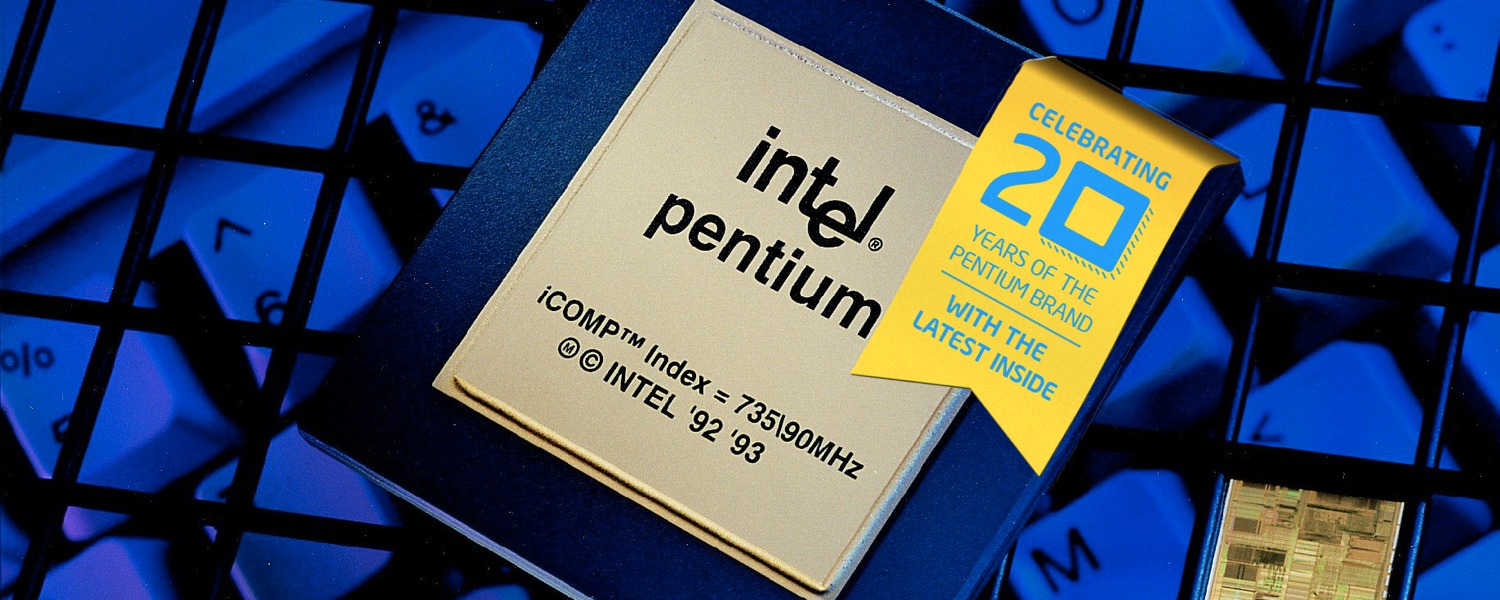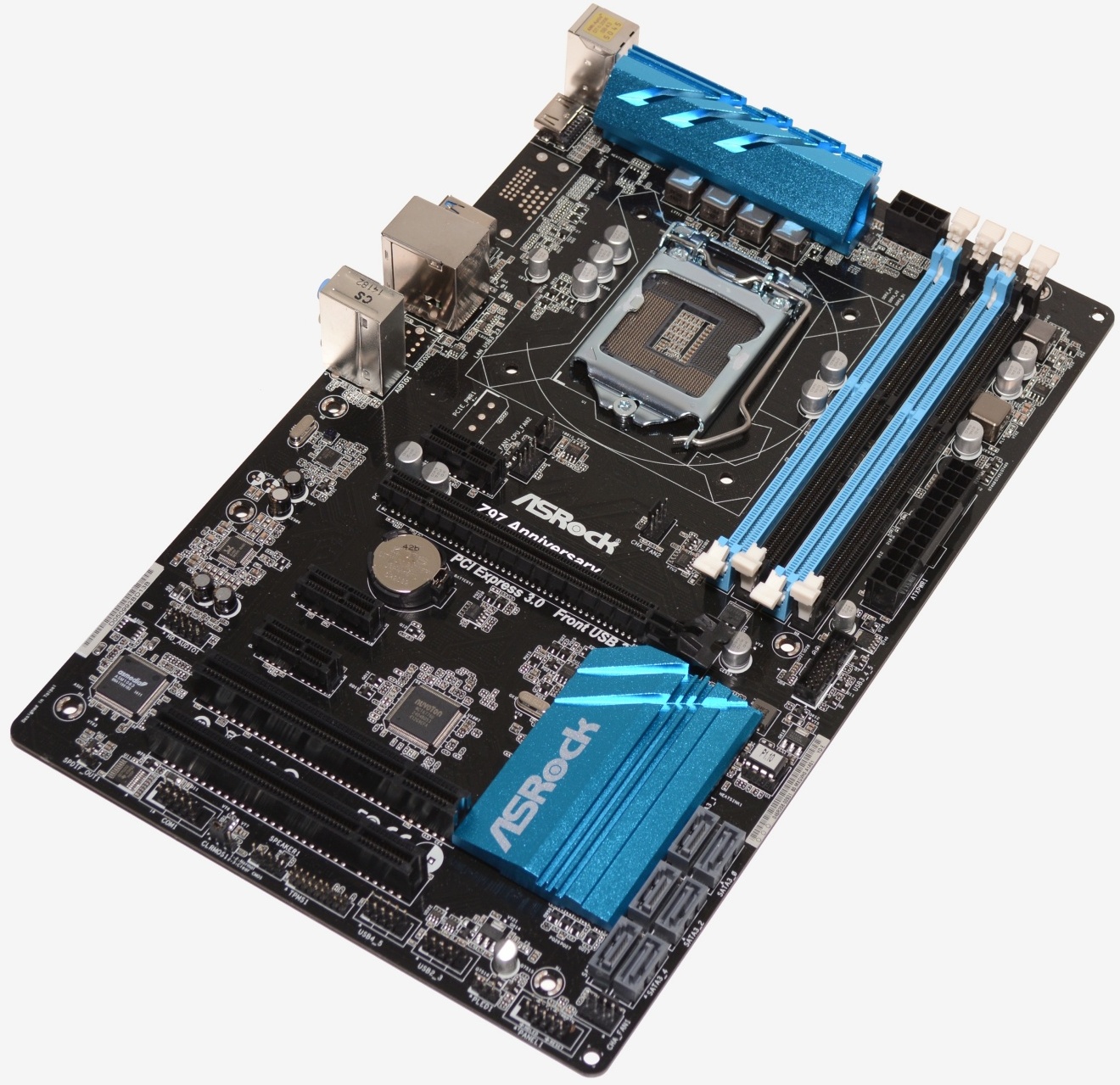ATX Build Core Components
Asrock Z97 Anniversary
In anticipation of the Pentium Anniversary, Asrock released two Z97 Anniversary motherboards, a standard ATX and micro ATX version. We have both and we'll check out the standard size board first.
As it stands, the Intel Z97 is the latest and greatest chipset available for the LGA1150 platform and the most desirable for overclocking. However, budget Z97 motherboards start at $100 and aren't focused on overclocking as there hasn't been a budget CPU to pair with them until now.
Quality Z97 motherboards cost upwards of $130, so Asrock developed the Z97 Anniversary, a $100 motherboard designed to extract the maximum amount of performance from the Pentium G3258 processor.
Apart from Asrock's Super Alloy package that includes a premium alloy choke (reduces 70% core loss compared to iron powder choke) and NexFET MOSFET, there are a number of useful features that target overclockers. In fact, overclocking experience isn't even necessary, as the Asrock Z97 Anniversary will push your Pentium G3258 processor to 4.4GHz at the press of a button.
Corsair Dominator Platinum 8GB 2133MHz
When it comes to memory, the Asrock Z97 Anniversary supports Intel Extreme Memory Profile (XMP) 1.3 / 1.2 at speeds up to DDR3 3100+. In the past, we have found that Intel's Haswell architecture responds well to high memory frequencies, with DDR3-2400 being the sweet spot.
That said, gamers can expect similar performance with cheaper and easier to obtain DDR3-1600 memory. This means it is possible to get away with spending as little as $70 on an 8GB kit, while some might opt to spend half that on a 4GB kit.
For this build we splurged on a Corsair Dominator Platinum 8GB 2133MHz kit at $115 – not very budget-orientated so feel free to make your own choice here. This is a low latency CL9 kit, though it is possible to purchase higher latency CL11 kits for around $70.
The Dominator Platinum series is Corsair's most elite memory series that combines flair with real performance. The memory features LED lighting effects that add something special to the system. More importantly, this high performance memory is built using only select memory ICs, highly-screened for performance and stability, and features patented DHX (Dual-path Heat eXchange) cooling technology, so you can push them to the limit.
If you don't want to drop $115 on Corsair's Platinum memory then check out its XMS 1600MHz 8GB kit for $75 or the 4GB version for $45.
Corsair Hydro Series H100i
For overclocking, the standard CPU box cooler simply won't do and it's dangerous to even try. An after-market cooler is a must and the choices are immense. Typically for a budget build we would suggest an affordable air-cooler like the one we used in the MicroATX build.
However, for the standard ATX build we were more flexible with the budget and opted for a high quality closed loop liquid cooling system from Corsair. The Hydro Series H100i might be a more elaborate cooling system than what is required, but at $100 it's a lot cheaper than we would expect given the specifications.
For just $60 the Corsair Hydro Series H55 is an option and with a single 120mm fan/radiator it's great for compact, quiet systems. However, the Hydro Series H100i has extreme overclocking written all over it with its 240mm radiator and dual SP120L high performance fans.
The H100i also features Corsair's 'Link' monitoring and control function that lets you monitor temperature, control lighting and adjust fan speeds right on your desktop. No additional hardware is necessary. Just connect the included Corsair Link cable to a USB header on your motherboard and download the Corsair Link Dashboard software.
Like the Asrock Z97 Anniversary motherboard's one button overclocking, the Corsair Hydro Series H100i is designed for ease of use. Simplifying the installation is pre-applied thermal compound and an intuitive mounting kit for AMD and Intel platforms.
Gigabyte GeForce GTX 750 Ti Black Edition
Picking a graphics card is often limited by budget. For those looking at purchasing the Intel Pentium G3258 Anniversary Edition processor we anticipate a GPU budget of around $150, and for that Nvidia offers the GeForce GTX 750 Ti while AMD has the Radeon R7 265 or R9 270.
For us the R9 270 seems like a no brainer at this price as it's essentially an underclocked Radeon HD 7870 which debuted at $350 two years ago. However, Gigabyte just released its special GTX 750 Ti Black Edition that should provide up to 14% more performance than a standard 750 Ti. There is a heavy emphasis on budget overclocking with this graphics card so it should be right at home in this build.
Apart from redesigning the card completely and adding a beefed up cooler, Gigabyte has conducted an extended 168-hour (7-day) server-level durability test on each Black Edition graphics card.
Whereas a standard GTX 750 Ti operates its core at 1020MHz with a boost clock of 1085MHz, Gigabyte has factory overclocked the Black Edition to 1163MHz with a boost clock of 1242MHz – 14% factory overclock!
As you would expect, the company's prized WindForce cooler has been included, though it's the 2X model as there isn't enough room for a third fan on this compact card. The company has still managed to include a large parallel inclined fin heatsink complete with a large 8mm copper heatpipe.
Nvidia's specification doesn't call for an external PCIe power connector, making the GTX 750 Ti the fastest GPU available that draws its power exclusively from the PCI Express connector. However, Gigabyte says this means that the GTX 750 Ti is drawing up to 84% of the power available from this 75w connector, leaving little room for overclocking. Therefore, it has added a 6-pin connector, which means the card's standard power consumption of 63 watts is now just 42% of the maximum available power, being 150w.
Finally, the Gigabyte GeForce GTX 750 Ti Black Edition measures just 204mm long and requires a 400 watt power supply. Whereas the core has been heavily overclocked, Gigabyte has stuck with the standard 5400MHz GDDR5 memory of which there is 2GB.




